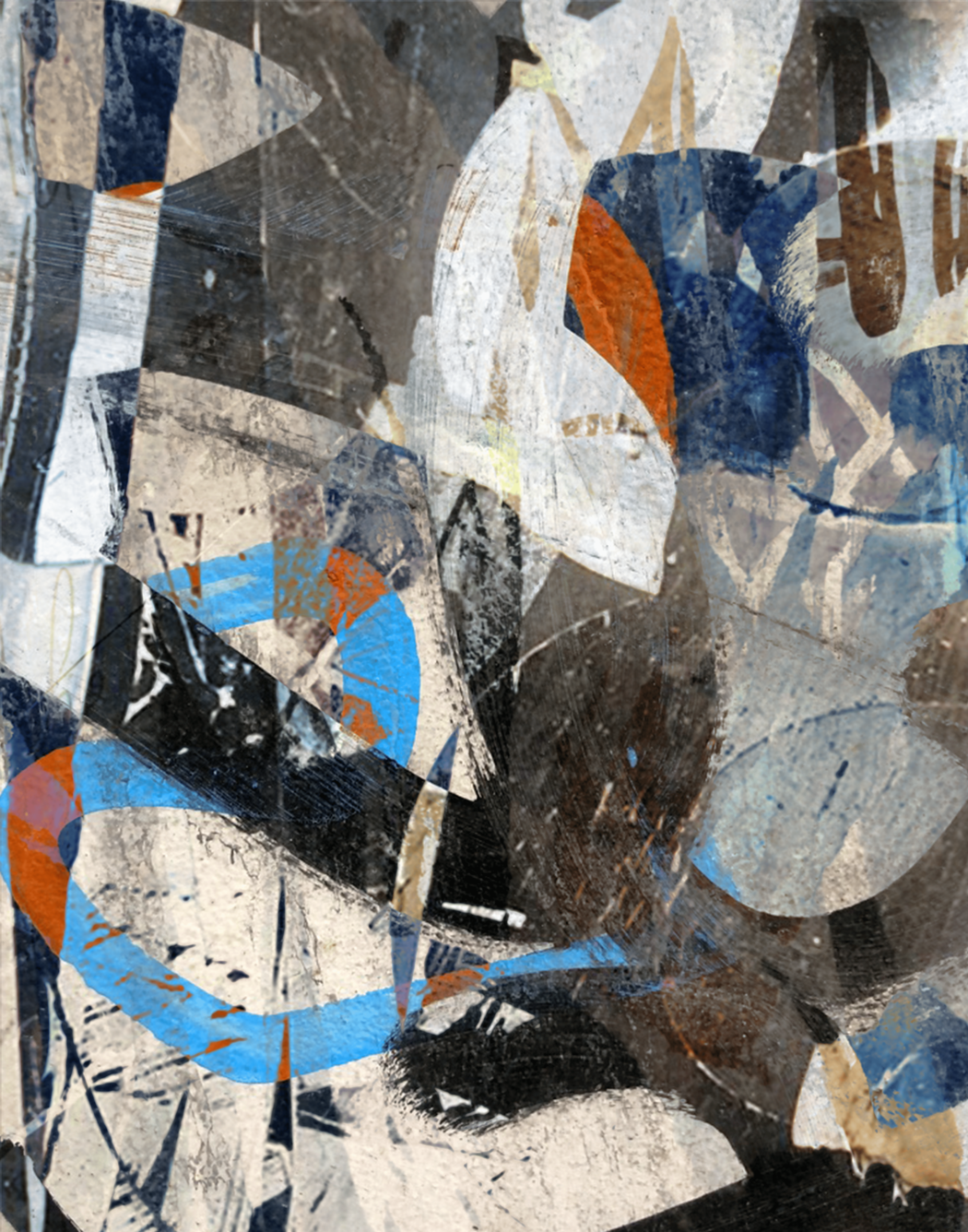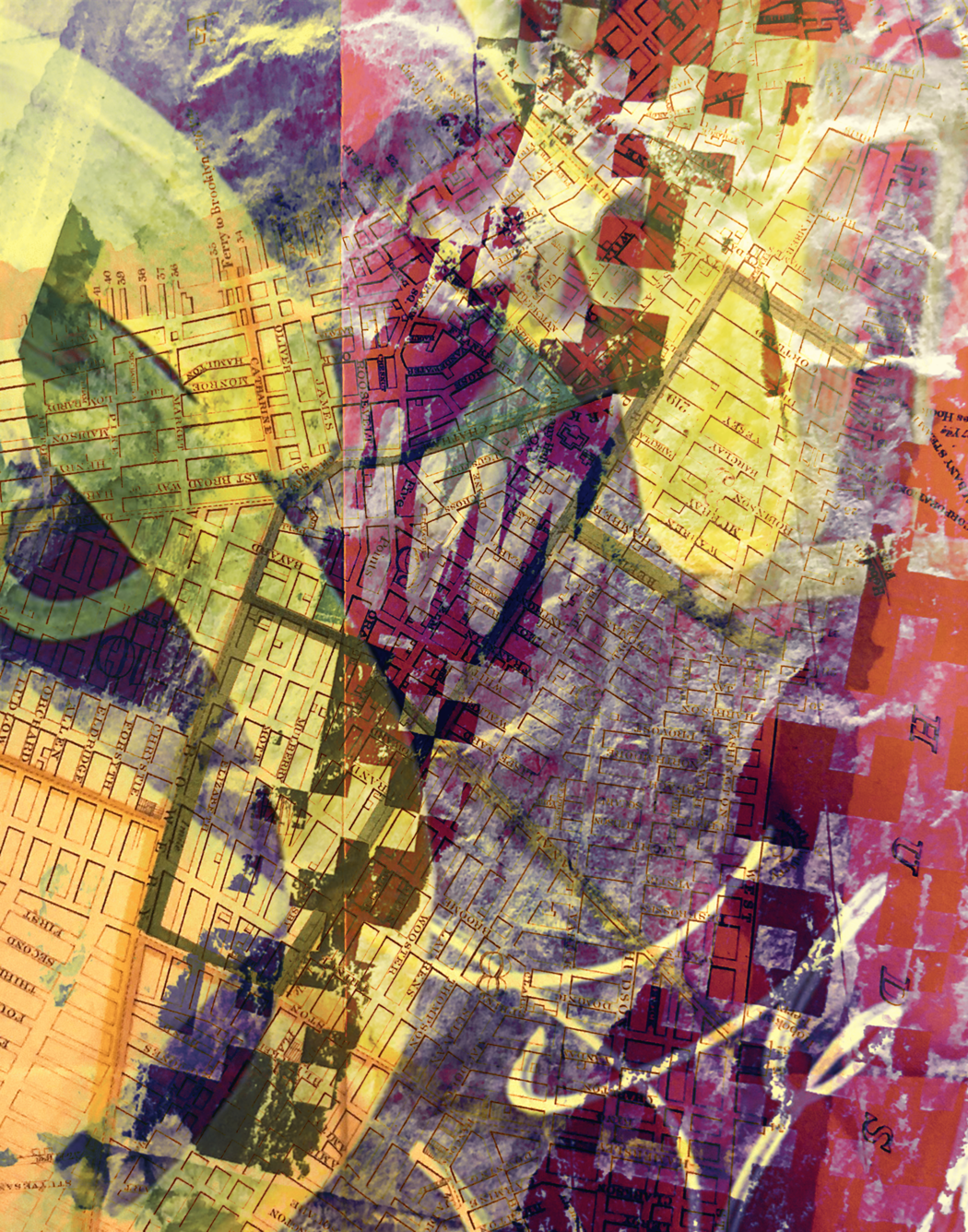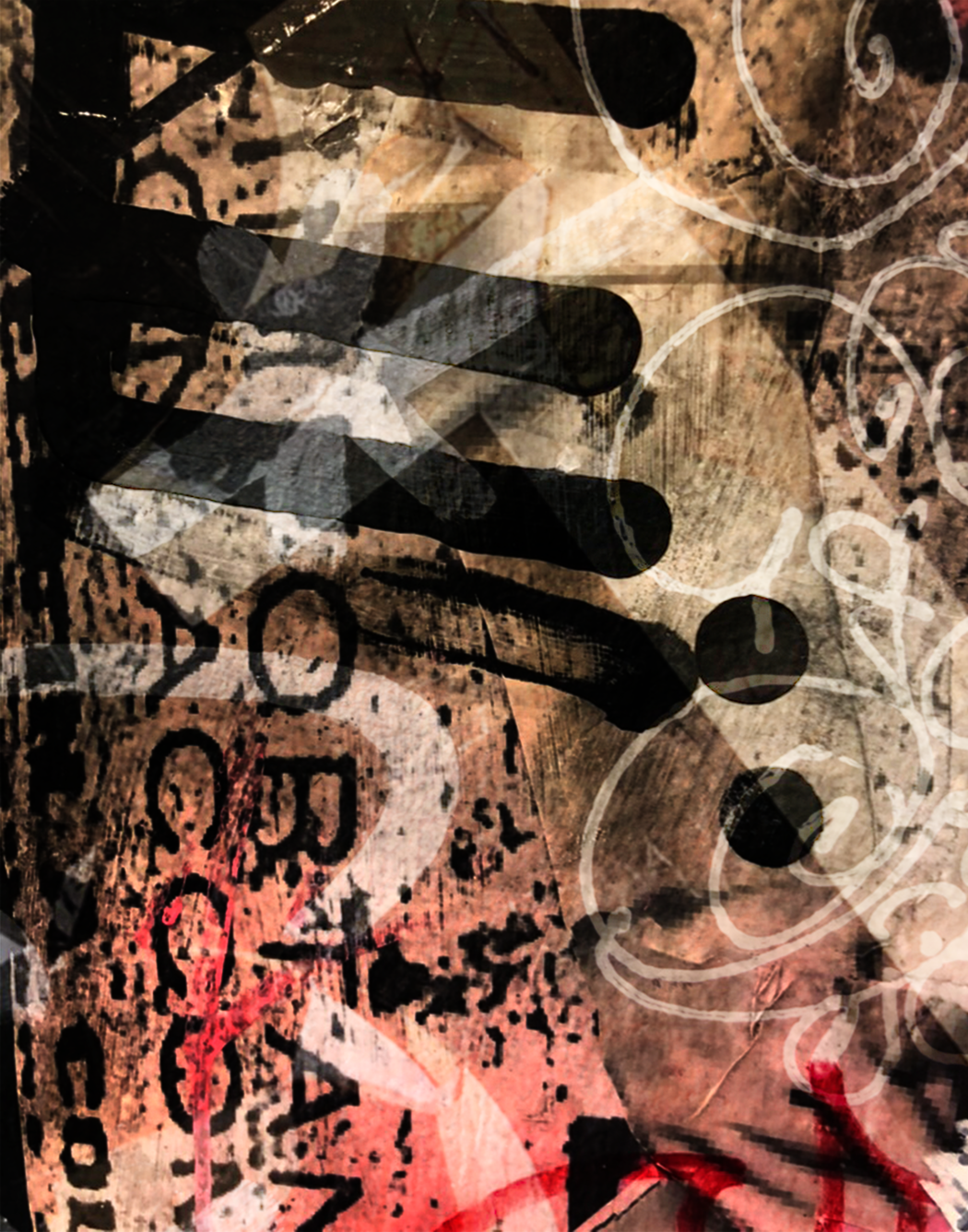Bethany Altschwager
Year of birth: 1986.
Where do you live: New Jersey.
Your education: Associate of Science and certificate in photography from Northwestern Connecticut Community College, Bachelor of Arts degree in Liberal Arts from Sarah Lawrence College, Master of Professional Studies in Art Therapy from the School of Visual Arts, and a Doctorate of Art Therapy from Mount Mary University.
Describe your art in three words: colorful, bold.
Your discipline: Photography.
Website | Instagram
How did your background in art therapy influence your artistic practice, particularly the “Street Layers” series?
I found my way into the field of art therapy in large part because art, and particularly photography, was life saving for me. I struggled a lot with depression in my adolescence and early twenties. In my senior year of highschool I spent almost every day in the darkroom. It was my safe space away from the nonsense going on in my head. In college, I was drawn to both art and psychology. As I learned more about the intersections between these, I became interested in the works of surrealists, particularly Man Ray. I started incorporating techniques like solarization, double exposure, and photograms into my work. I also explored collage and digital imaging. Beyond the techniques, I was fascinated with the dreamlike images and what emerges from the unconscious.
After college, I was able to continue my darkroom work by teaching art at a boarding school and working as a darkroom technician at a local community college. I was able to work both in the darkroom and digitally, sometimes even combining the two by creating digital negatives to print on acetate. Over time, a lot of places, including the boarding school, shuttered their darkrooms. This, combined with changes in the administration of the school provoked by the economic downturn of the late noughts, left me searching for a new direction for my career. I applied for graduate school in art therapy and started studying at the School of Visual Arts. Among the requirements to complete the degree was completion of internship hours to gain practical, supervised experience. In one of my internships I started using digital tools to make with children in an afterschool program. This turned into my master’s thesis work and a catalyst for finding ways to create a digital analog to the darkroom processes that I was missing. The way that I assemble layers of photographs into Photoshop now, is about as close as I regularly get to some of my early darkroom experiences.
 Bethany Altschwager | 181st and East 97th | 2025
Bethany Altschwager | 181st and East 97th | 2025
What drew you to street textures and graffiti as the central focus of your work?
My introduction to photography was in my hometown of Collinsville, a small suburban town in the Farmington Valley of Connecticut. I drew a lot of inspiration from modernist photographers, Edward Weston in particular. I admired how Weston framed his compositions of humble objects like cabbage leaves and mushrooms in ways that mimicked majestic subjects like sand dunes and the Grand Canyon. After seeing these images I developed an appreciation for the textures of everyday things. When I moved to New York to finish graduate school, the textures around me changed from the bark, stones, and moss of my hometown to the concrete, spray paint, and rust of the city. As I started looking more carefully, the tags I would see reminded me of the brushstrokes in expressionist paintings.
Over time, I lived and worked in different neighborhoods around the city and each place had a different variety of graffiti. For example, the Lower East side tends to have more colorful pieces and they’re allowed to stay up for much longer. In areas like the West Village you’re more likely to see posters that have been pasted up and torn down, leaving fragments of color and layers of peeled paper. What you see has also changed quite a bit over the past decade. Many of the advertisements in the subway have been replaced with video screens, so I photograph those too which generates glitch effects and moire patterns.
Graffiti is also a way that people assert their presence, a way of saying “I was here.” When I first started the series, that was an important element as well. I was fresh out of graduate school, freshly divorced, and trying to establish myself in a new city. It was hard to feel grounded and present. It was hard to feel like I was putting my stamp on anything or making progress. As I’ve gotten more established in my profession, and I’m able to make my mark through conducting therapy, teaching, and making my artwork, I think I better appreciate the very basic human drive to create, so I’m still drawn to this part of my environment.
Could you walk us through your creative process when creating one of your “Street Layers” collages?
My process starts with taking a walk. As I travel to my destination I keep an eye out for bright colors, peeling paste ups, tags with painterly line quality, and anything else that catches my eye. I take close up photographs of what I find on these outings. These images form the palette I pull from when assembling my collages. When I get back to my computer, I import the images into separate layers in Photoshop and experiment with the blend modes and opacity- how the layers sit on top of each other. I’m intentional about choosing combinations of images from different neighborhoods or streets that don’t intersect. SInce I have been working in this way for so many years, many of the newer pieces include layers from not only different neighborhoods but different years in time.
What does the concept of “renewal and decay” mean to you, and how do you express it visually?
The only thing that is constant in life is that it changes. Nothing lasts forever. In my life there have been periods of rapid growth, building relationships, advancing in my career, and focusing on my art. There have also been periods marked by loss and burnout. People die, relationships end, and programs close, leaving a void. Like fields laying fallow in the winter, I would pull back and build up my emotional reserves again. In the empty spaces was room for new growth.
I express renewal and decay through both the subject matter and the forms in my art. The surfaces I photograph, by their nature, will not last forever. Graffiti fades, gets washed away or painted over. It lasts until something new takes its place. Similarly, the paste ups get weathered by the elements or torn down until something new goes up in their place. Formally, the fragmentation in my images demonstrates this process of a subject falling apart so a new subject can come together.
 Bethany Altschwager | East 10th and 4th | 2024
Bethany Altschwager | East 10th and 4th | 2024
How do you think the ephemeral nature of the street art you photograph aligns with the themes of identity and transformation in your work?
The ephemeral nature of street art aligns with the themes of identity and transformation because it is an outward manifestation of the zeitgeist. The posters represent the concerts, products, and political campaigns of this moment in time. The tags are an assertion of presence in the here and now. Murals are the monuments to communities that we value today. While the exact configurations may change, the visual language graffiti has similar handwriting. Art, in any form, is influenced by both the past and the present moment.
Our identities shift and change throughout our lives in a similar way, building upon past experiences and making a more cohesive whole from disparate parts. Our bodies are the container for our experiences and these are also always changing on the microscopic and macroscopic levels. In short, who we are and what we are is always changing, but there are echoes from the past that find new forms in the present.
The time that I carve out time for making art and the role of artist in my identity has shifted and changed over the years. I wear a lot of hats as an art therapist, an educator, a leader, a friend, a wife, and an artist. There are times when these other roles come more to the forefront and, if I’m not careful, crowd out the artist identity. During COVID, I was working on my doctorate and still physically going to work every day but much of my photography work came to a halt. I would work all day, come home to my studies, knit or run, and go to bed. As I gained momentum in my career by teaching, supervising, and volunteering, there was less and less involvement in any type of art. I found myself getting stretched thin caring for other people and not really nourishing myself.
This past year I joined a group of other art therapists in organizing a juried art show as part of a fund-raising effort to benefit the LCAT Advocacy Coalition- a group lobbying to get licensed creative arts therapists (LCATs) parity with other mental health practitioners in New York State. I picked up my Street Layers series where I left off and submitted my work. We had over 100 LCATs submit their work and 42 of them displayed in the show in Chelsea. On opening and closing nights we packed the gallery full! The energy and enthusiasm of the event has galvanized the artist part of my identity which feels firmly in the foreground.
Can you talk more about the role of time and space in your collages?
My collages composite photographs taken during different times (either in the same day, week, month, year, or lifetime) and in different physical locations into single images. This reflects my experiences of moving through places like New York City and the experiences I have along the way. I think of my work as liminal spaces; transitionals areas between two places or states. Coming and going. Leaving and arriving. Being versus becoming. As the series has progressed, the variable of time has expanded. I incorporate current photographs as well as pictures taken over the span of the past ten years.
 Bethany Altschwager | 23rd and 181st | 2025
Bethany Altschwager | 23rd and 181st | 2025
In your practice, how do you balance the tension between holding on and letting go, both in your art and personal life?
Finding a balance between holding on and letting go is an ongoing process for me. I was raised with a strong sense of loyalty and as a creative person I see the potential of how things can be. That makes it challenging to know when to stick things out and when to move on. The transition from darkroom photography to digital, shifting from art education to art therapy, ending my first marriage, and changing jobs are all examples of this dynamic of holding on and letting go. Within my art, this tension is expressed visually in the fragmentation of the images. I play with the layers to see how far I can push the images so that some parts of them are still recognizable. How far before they completely fall apart?

Leave a Reply